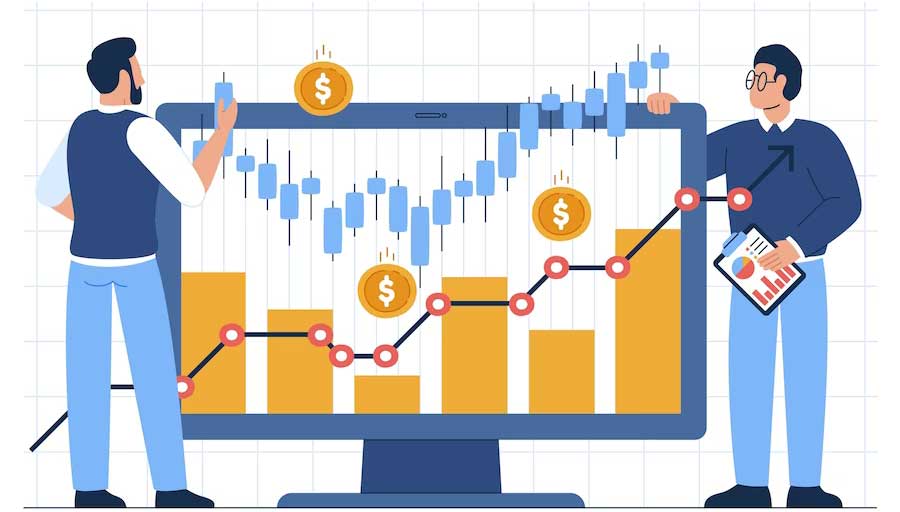Learn more about trading E-Mini Futures here.
E-mini futures are electronically traded futures contracts that represent a smaller version of their corresponding full-size futures contracts. These contracts are popular among traders due to their versatility, low margin requirements, and 24/5 trading hours. Trading E-mini futures can be profitable, but it requires a well-thought-out trading plan and the use of effective trading techniques. In this article, we will discuss some of the most common trading techniques for trading E-mini futures.
- Technical Analysis – Technical analysis is the study of market data, such as price and volume, to identify patterns and trends that can help traders make informed trading decisions. Technical analysis can be particularly useful for trading E-mini futures, as these contracts are known for their price volatility and frequent trend reversals. Some common technical analysis tools used in E-mini futures trading include moving averages, oscillators, trendlines, and chart patterns. Traders can use these tools to identify support and resistance levels, trend direction, and potential entry and exit points.
- Fundamental Analysis – Fundamental analysis involves studying macroeconomic data, such as economic reports, news events, and corporate earnings, to determine the underlying value of an asset. In the case of E-mini futures, fundamental analysis can be used to understand the broader economic and market trends that affect the prices of the contracts. For example, a trader may analyze data on GDP growth, interest rates, inflation, or geopolitical events to gain insight into market sentiment and potential price movements.
- Scalping – Scalping is a trading technique that involves making multiple trades throughout the day with the goal of capturing small price movements. Scalping can be an effective strategy for trading E-mini futures, as the contracts are highly liquid and frequently experience short-term price fluctuations. Scalpers typically use tight stop-loss orders to minimize losses and aim to make small profits on each trade. Scalping requires quick decision-making, discipline, and a thorough understanding of market dynamics.
- Day Trading – Day trading involves buying and selling E-mini futures contracts within the same trading day, with the goal of profiting from intraday price movements. Day traders typically use technical analysis and charting tools to identify trends and trading opportunities. Day trading requires discipline and risk management, as traders must be able to make quick decisions and manage their positions throughout the day.
- Swing Trading – Swing trading involves holding E-mini futures contracts for several days or weeks, with the goal of capturing medium-term price movements. Swing traders typically use a combination of technical and fundamental analysis to identify potential trading opportunities. Swing trading requires patience, discipline, and risk management, as traders must be able to tolerate short-term market fluctuations while waiting for their trades to play out.
- Position Trading – Position trading involves holding E-mini futures contracts for an extended period, typically several weeks to several months, with the goal of profiting from long-term price trends. Position traders typically use fundamental analysis to identify underlying economic and market trends that can drive price movements over the long term. Position trading requires discipline, patience, and risk management, as traders must be able to tolerate short-term volatility while waiting for their trades to mature.
- Algorithmic Trading – Algorithmic trading involves using computer programs to execute trades based on predefined rules and algorithms. Algorithmic trading can be an effective strategy for trading E-mini futures, as it allows traders to react quickly to market data and execute trades at high speeds. Algorithmic trading requires advanced programming skills, as well as knowledge of statistical analysis and financial modeling.
In conclusion, trading E-mini futures requires a thorough understanding of market dynamics and the use of effective trading techniques. Technical and fundamental analysis, scalping, day trading, swing trading, position trading, and algorithmic trading are some of the most common techniques used by E-mini futures traders.
Ready to start trading futures? Call 1(800)454-9572 and speak to one of our experienced, Series-3 licensed futures brokers and start your futures trading journey at E-Futures.com today.
Disclaimer – Trading Futures, Options on Futures, and retail off-exchange foreign currency transactions involves substantial risk of loss and is not suitable for all investors. Past performance is not indicative of future results. You should carefully consider whether trading is suitable for you in light of your circumstances, knowledge, and financial resources. You may lose all or more of your initial investment. Opinions, market data, and recommendations are subject to change at any time.




